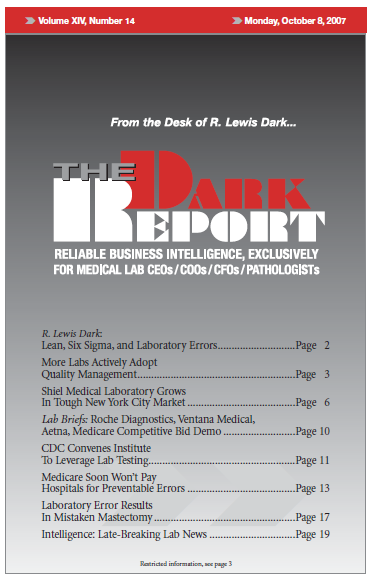CEO SUMMARY: With almost 300 speakers, attendees, and vendors in attendance from seven countries, Lab Quality Confab was a significant milestone for the global lab industry. On one level, it was a sign that the quality improvement trend has come of age. On another level, it provided ample and powerful evidence that labs using Lean …
More Labs Actively Adopt Quality Management Read More »
To access this post, you must purchase The Dark Report.


